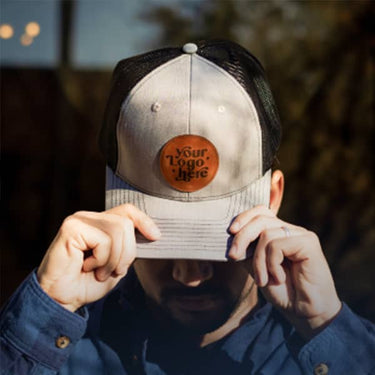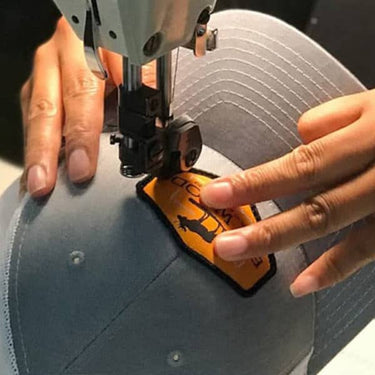The Unbelievable Journey of Hats Patches
The Evolution and Significance of Hats Patches
| Period | Key Development | Significance |
|---|---|---|
| Early Beginnings | Hand-stitched for royals | Symbol of status and wealth |
| Industrial Revolution | Merrow Sewing Machine | Mass production, uniform quality |
| World War I | First military patch (Big Red One) | Identification, unity, pride |
| Scouting and Parks | Boy Scouts merit badges | Popularized embroidered patches |
| Modern-Day | Ubiquitous in various professions | Achievements, affiliations, identity |
Early Beginnings
Patches have a rich history that dates back centuries. Initially, they were hand-stitched onto the robes of royals and clergy, showcasing intricate embroidery. This practice was a symbol of status and wealth. However, the Industrial Revolution marked a significant turning point in patch production. The advent of sewing machines, particularly those developed by the Merrow Sewing Machine Company, revolutionized the industry. These machines enabled the mass production of patches, making them more accessible and uniform in quality. This technological advancement laid the groundwork for the cap patches we see today.
Military Adoption
The use of patches in the military began in earnest during World War I. On October 31, 1918, the U.S. military issued its first patch, known as the Big Red One, for the 1st Infantry Division. This patch was a game-changer, setting a precedent for the use of patches to identify divisions and ranks within the armed forces. Over time, patches became a standard feature on the uniforms of all military branches, serving both functional and symbolic purposes. They not only helped in identifying personnel but also fostered a sense of unity and pride among the troops.
Patches in Scouting and Parks
The Boy Scouts of America played a pivotal role in popularizing embroidered fabric patches through their merit badge system. These patches, often referred to as scout patches, are known for their distinctive merrowed edge. This edge, created through overlock stitching, prevents fraying and ensures durability. The term “merrowed edge” is derived from the Merrow Sewing Machine Company, which was instrumental in developing this stitching technique.
Scout patches also have a significant presence in the United States park systems. Park rangers wear them as part of their uniforms, and they are a popular souvenir among tourists visiting National and State Parks. These patches serve as a tangible reminder of the natural beauty and adventures experienced in these parks.
Modern-Day Applications
Today, patches are ubiquitous. They are found on the uniforms of various professions, from police officers to firefighters, and even on high school letterman jackets. These patches often symbolize achievements, affiliations, and identities. The versatility and durability of patches have ensured their continued relevance in various fields.
The Rise of Cap Patches
| Aspect | Example Brand/Product | Consumer Appeal |
|---|---|---|
| Fashion and Identity | Hippie movement patches | Self-expression, individuality |
| Brand Integration | Banner & Oak caps | Nostalgic, aesthetic appeal |
| Consumer Preferences | High-end designs | Unique, customizable options |
| Retail Look and Feel | Outdoor Cap products | Elevated aesthetic, market demand |
Fashion and Identity
The 1960s marked a significant shift in the use of patches, particularly in the fashion world. During the hippie movement, patches became a means of self-expression. Young people adorned their jeans and denim jackets with patches featuring flowers, peace signs, and protest slogans. This trend transformed patches from mere functional items to powerful symbols of identity and beliefs.
In recent years, patches have experienced a resurgence, particularly in the outdoor retail market. Brands have recognized the appeal of patches in conveying a sense of adventure and individuality. For instance, you no longer need to visit Wyoming to get a cap with a Yellowstone patch or train to be an astronaut to own a NASA patch. Patches have become a way for people to showcase their interests and affiliations without saying a word.
Consumer Preferences
| Field | Example Patch | Purpose |
|---|---|---|
| Military | Big Red One | Identify divisions, ranks |
| Scouting | Merit badges | Recognize achievements |
| Parks | Ranger patches | Uniform part, tourist souvenirs |
| Professions | Police, firefighters | Symbolize roles, achievements |
| Fashion | Hippie movement patches | Self-expression, identity |
Cap patches have become highly coveted for their ability to give caps a retail product look and feel. Consumers today are increasingly demanding high-end, unique designs that stand out. Patches offer a versatile and customizable option for brands to meet these demands. Whether it’s a simple embroidered logo or an intricate leather patch, these additions can elevate the overall aesthetic of a cap, making it more appealing to consumers.

In conclusion, the evolution of patches from hand-stitched symbols of status to mass-produced identifiers and fashion statements is a testament to their enduring appeal. Cap patches, in particular, have carved out a niche in the market, offering a blend of tradition and modernity that continues to captivate consumers. As brands continue to innovate and integrate patches into their designs, it’s clear that this trend is here to stay.


